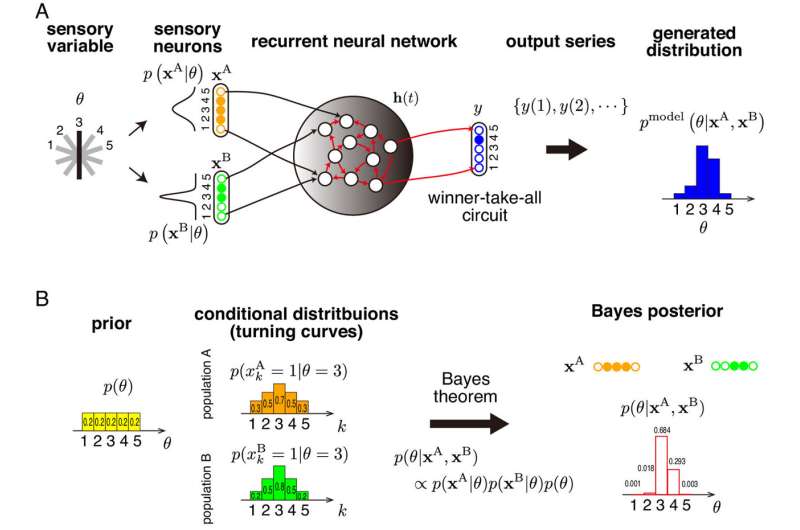This article has been reviewed according to Science X's editorial process and policies. Editors have highlighted the following attributes while ensuring the content's credibility:
fact-checked
peer-reviewed publication
trusted source
proofread
Chaotic dynamics in the brain may enable probabilistic thinking

Chaos may be behind the brain's ability to compute probabilities, according to a new analysis by two neuroscientists at RIKEN. The research is published in the Proceedings of the National Academy of Sciences.
Our perception is shaped by multisensory inputs. For instance, the brain processes sights and sounds to generate a range of possible locations for an object and estimates the uncertainty associated with each option. But how exactly the brain assesses these possibilities is a mystery.
Taro Toyoizumi of the RIKEN Center for Brain Science (CBS) believes that the answer may lie in the observation that electrical signals in the cortex are always buzzing—even when there is no sensory input. Recordings of such signals show that even when watching a blank screen with no sound, neurons in the cortex fluctuate spontaneously, he says.
Some experiments suggest that this spontaneous activity corresponds to the brain ruminating over imagined possible scenarios—perhaps based on sensory inputs the brain has been presented with in the past.
Toyoizumi, with CBS colleague Yu Terada, wanted to investigate the hypothesis that this activity follows chaotic dynamics—where a tiny change in initial conditions can lead to wildly divergent outcomes.
Often invoked in climate modeling, chaos theory is illustrated by the butterfly effect whereby an insect flapping its wings in Switzerland, for instance, might ultimately cause a typhoon in Japan.
"There have been observations suggesting a butterfly-like effect in the brain," says Toyoizumi. "It has been seen by perturbing a single neuron and seeing how quickly the influence spreads over the population of neurons. But it is still a debate."
The pair's idea is that chaotic dynamics in the brain generate the neural fluctuations that allow probabilistic computations. "This seems counterintuitive because you might assume that chaotic thinking would lead to wildly divergent answers," says Toyoizumi. "People associate chaos with computational errors, which you want to avoid."
The pair fed a computational neural network, driven by chaotic dynamics, with sensory inputs about an object's location.
"One neuron would fire for the object being in the north, another for it being in the northeast, and so on," says Toyoizumi. At any one moment, because of the chaos, the firing neuron can change irregularly. But when averaged over time, the frequency of neurons firing mapped to the correct probability for the object's location.
"In our model, the ultimate probabilistic distribution is robust and gives nearly optimal results, despite the chaos," says Toyoizumi.
Toyoizumi's next goal is to investigate creativity. "Today's AI is very good, but it's not blowing our minds," he says. "I want to understand what kind of fluctuations generate creative ideas."
More information: Yu Terada et al, Chaotic neural dynamics facilitate probabilistic computations through sampling, Proceedings of the National Academy of Sciences (2024). DOI: 10.1073/pnas.2312992121


















